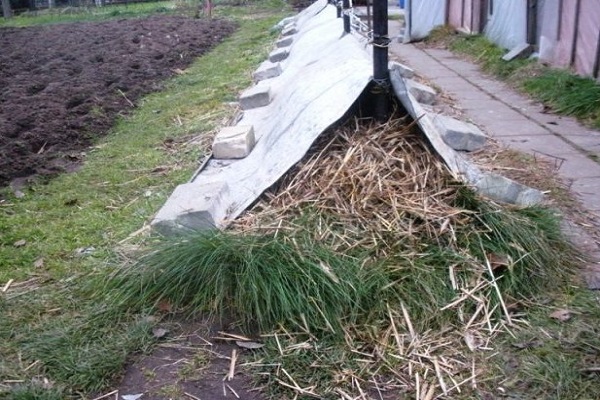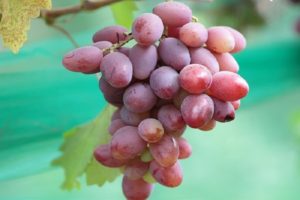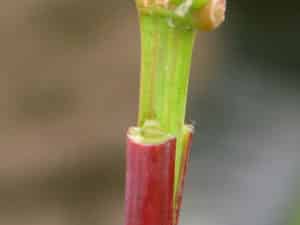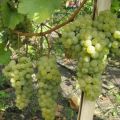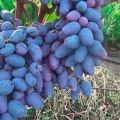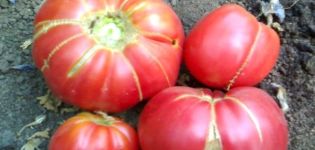Why grapes do not bloom and bear fruit and what to do, preventive measures
Through the efforts of breeders, grape varieties growing in the northern and southern regions, unpretentious in care, have been bred. Gardeners periodically face the problem of why grapes do not bear fruit. There are many reasons, ranging from improper care to vine disease. To find a mistake in caring for a plant, you need to analyze all stages and exclude all unfavorable factors.
When grapes begin to bear fruit
The fruiting time is different for each variety. Experienced gardeners let the bush grow for the first 2-3 years, breaking off all the tied brushes. When the plant hardens well, it will give a rich harvest.
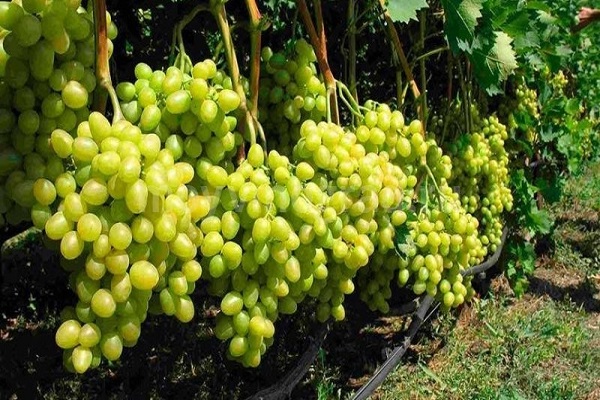
In theory, if all the flowers are pollinated in the brush, all the berries are tied and ripe, then its weight will be 5-7 kilograms. In real conditions, some flowers and weaker berries fall off in order to give room for stronger ones.
According to the rules of gardening, for grapes for the 2nd year, all flowers are pinched, 3-year-old grapes can bear fruit. For some varieties, it is desirable to also remove flowers in the 3rd year and only in the 4th year to allow the first harvest to ripen. The duration of fruiting depends on the quality of care. She is 12 to 50 years old on average.

What determines the yield
Many grapes will ripen on a well-groomed bush. Requires the plant to:
- the place of planting and the quality of the formation of the bush;
- top dressing;
- treatment for diseases;
- timely pruning;
- weather conditions.
Emerging problems
Novice and experienced summer residents, when growing grapes of one or more varieties, are faced with a problem when one or more bushes may not yield a crop, but at the same time bloom profusely. And in some cases, the grapes not only do not ripen, but also do not bloom.
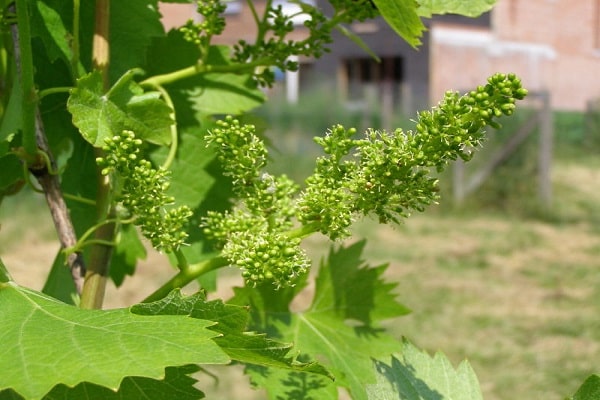
Does not bloom or bear fruit
Grapes are a thermophilic crop and their flowering will depend on where they are planted. Until the vine reaches the sun, there will be no berries on it. Another reason is excess fertilizer. Then the bush grows: there are many new shoots and leaves, but no color.
It is worth making sure that the bush is not frozen, that the eyes that give the crop are not cut off. The lack of flowering is sometimes due to the special requirements of the variety.
Blooms but does not bear fruit
The gardener evaluates the possible harvest by the quality of flowering.If it is significantly less than expected or not at all, they look for the reason. Perhaps the vine was not properly cared for or this particular variety is not famous for its rich harvest.
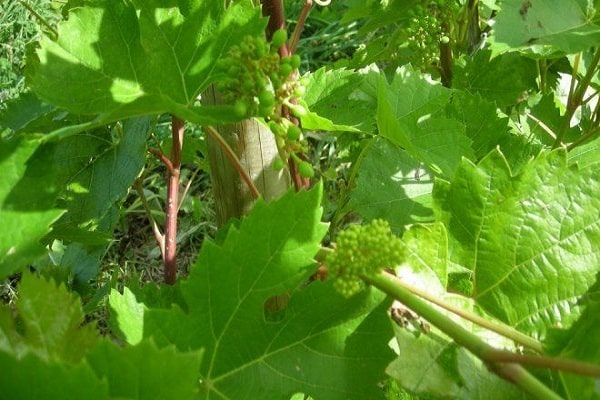
Infertility after flowering in grapes is associated with the type of pollination:
- Female type. Pollination is possible only from another male-type grape variety. The vine is checked by transferring pollen to it from another flowering and fruiting bush. If the ovary has appeared, it means that a pollinator should be planted closer to this grape or a stock should be made.
- Male type of pollination. The peculiarity of the varieties is that they never give a rich harvest, but act as a rootstock for others.
- Male and female vines are planted next to each other. The lack of a crop lies in the flowering time - it may not coincide.
Reasons for the lack of ovary formation
Plant care is a guarantee of the harvest. Sometimes novice gardeners make mistakes that prevent the grapes from blooming and ripening in large quantities. While grooming is not difficult, there are a few common mistakes.
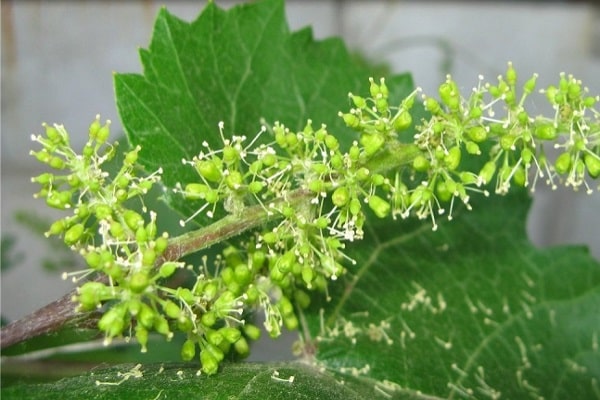
Excess organic matter
Excess nitrogen fertilizers and organic matter directly at the rhizome of grapes provokes abundant growth of the bush. He throws out new shoots, leaf buds open. The grape pleases with a dense green crown, but does not bloom or bear fruit. Summer residents talk about such a bush "fattening".
Excess fertilization stimulates plant growth until frost. Young unripe shoots die even from slight cold weather. The plant loses its immunity to certain diseases.
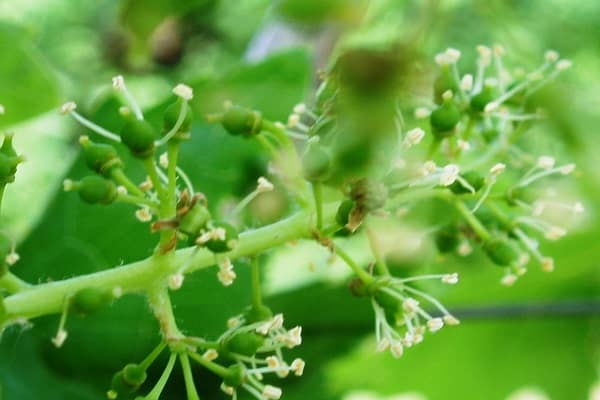
Incorrect cropping
Fruit-bearing shoots in spring grow from "eyes" on annual branches. In the fall, it is customary to prune young shoots. Illiterate gardeners can cut off all fruiting shoots or leave them too short. Depending on the variety, 4-8 or 8-12 eyes bloom.
Shorter pruning opens up additional buds that only produce foliage. Before you start pruning, you need to familiarize yourself with the flowering features of each individual variety.
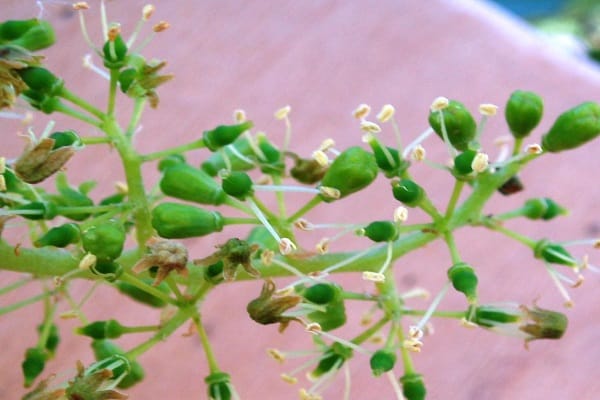
Sparse pollination
The weather is important for pollination. High humidity, an abundance of rains prevent the berries from setting, and in such a year, without additional, artificial pollination, the harvest is poor.
Another reason for poor pollination is the female type of inflorescence. Unlike bisexual varieties, such a bush requires either the artificial transfer of pollen to it, or planting a pollinator grape next to it. All varieties of raisins are considered a universal variety.
Freezing vines in winter
Insufficient shelter, severe frosts or spring frosts damage, first of all, annual shoots, on which fruit-bearing buds are preserved. You can assess the condition of the bush by cutting the peephole. If there is a green primary and replacement bud inside it, the branch is alive. Brown color is a sign of the death of the shoot. You can restore the bush by cutting off all the affected parts, this stimulates the growth of replacement buds, but the harvest for this year will be small.

Unsuitable drop-off location
Adequate sunshine and warmth helps to grow large brushes. Grapes growing near buildings, on the northern slopes or under other trees will never yield a good harvest. Ideally, the soil should not be very moist, heated to 28-32 degrees.
Planting a mixture of young and old plants does not allow a new variety to take root, it is oppressed by its neighbors. When using the rootstock, look for compatible grape varieties.
Pests and diseases
Pests and diseases interfere with the growth of the grape bush. Shoots are attacked by spider mites and aphids. They are destroyed with systemic insecticides. Among the diseases, the most common are gray rot and mildew. The first disease affects any area, it is distinguished by a gray bloom. Mildew is dangerous for young shoots and berries, it appears as oily spots.The affected plant, without special treatment, slowly dies. Regular inspection of leaves and shoots will help identify a disease or pest in time.
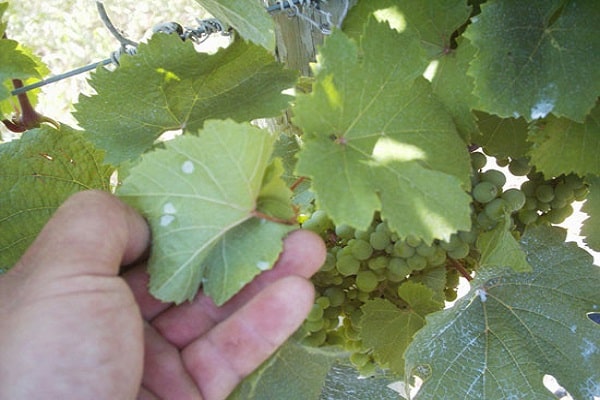
How to ensure the full fruiting of a culture
Before buying and planting a grape seedling, study the peculiarities of growing a culture in general and individual varieties. Plant care is not difficult, but it has its own characteristics. By knowing what to do with young grapes, you can achieve high yields.

Choosing the right variety
Depending on the climatic conditions, a grape variety is chosen. There are heat-loving, drought-resistant, frost-resistant plants. The berry is round, elongated, of different colors and sizes, with or without seeds. By type of flowering, there are female, male and bisexual varieties.
For the first planting, it is better to choose the grapes that are most often found in the summer cottages of neighbors. Experienced gardeners can experiment with more capricious and productive shrubs.

Fertilizer dosage
Professionals advise the following feeding scheme:
- autumn is the time for organic fertilizers, and spring is for nitrogen fertilizers, and first 50% of the recommended dose is taken;
- complex preparations are applied before flowering and after the ovary;
- ammonium nitrate is added during the ripening of the berries;
- potassium is introduced in the fall, for harvest. It increases frost resistance, helps prepare the bush for winter.
Fertilizers are applied under the bush, to the roots, to a depth of 0.5 meters. To do this, use pipes dug into the ground.
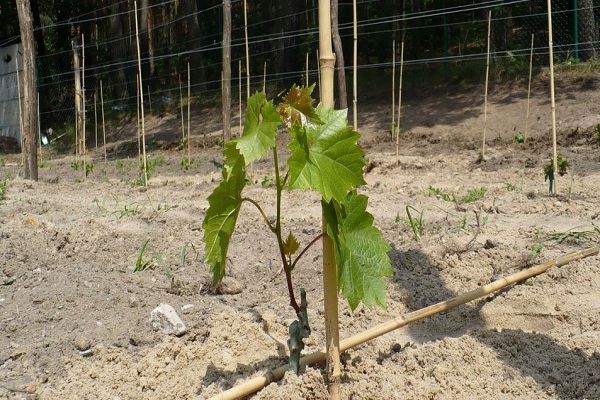
Regular watering
Watering is important during the ripening and pouring of the berries. Lack of moisture will prevent the bunches from overflowing, and excess will lead to cracking of the skin. It is regulated depending on the weather. If it is dry, then increase it. The main thing is to prevent a sharp drop in moisture level.

Stimulating greater pollination
Pollination can be natural or artificial. In the first case, caring for flowering grapes consists of:
- the correct planting scheme: alternation of male and female, selection of varieties according to growth (tall and short should not shade each other);
- thinning stepchildren and dense foliage to facilitate pollination;
- if the variety often drops flowers, it is pinched;
- sprinkling in heat and low humidity.
Artificial pollination can increase the yield by 40%. To do this, the pollen from the flowering bush is transferred to another or distributed over it with a downy brush. The procedure is repeated 2-3 times at the beginning, middle and end of flowering. The best time is morning or mid-afternoon in cloudy weather.
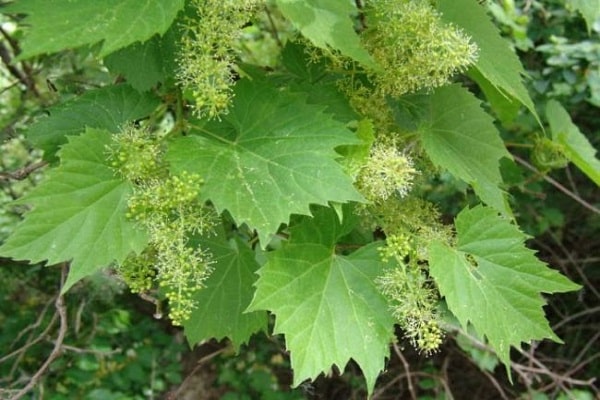
Correct formation of the bush
The experience of professionals has shown that the ideal grape bush consists of 1-3 main arms. In autumn or early spring, before the juice begins to move, one-year-old shoots are pruned. 4-12 eyes are counted from the trunk, depending on the variety, and 4 more eyes are added to them. The rest is cut off. This eliminates weak grapes.
As the greenery grows in spring and during the summer, the bush is thinned out, the shoots are normalized and the clusters are combed out with a paint brush, removing weak berries and flowers. The varieties that shed berries and flowers are pinched.
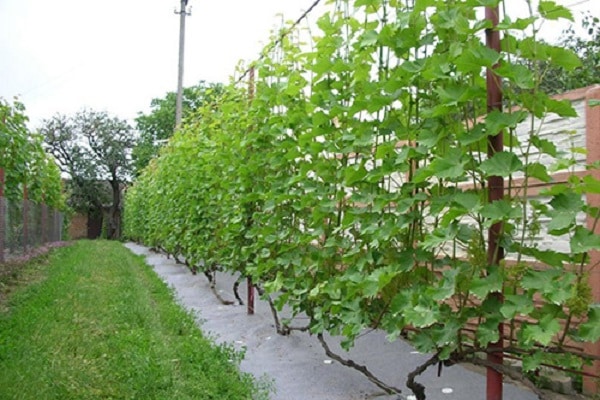
Timely processing
Diseases and pests can not only reduce the yield, but also destroy the entire bush. The grapes are constantly examined for insects, blackheads, wilted leaves and other signs. Every disease has its own chemical.
Some varieties are particularly prone to certain diseases and preventive treatments are necessary.
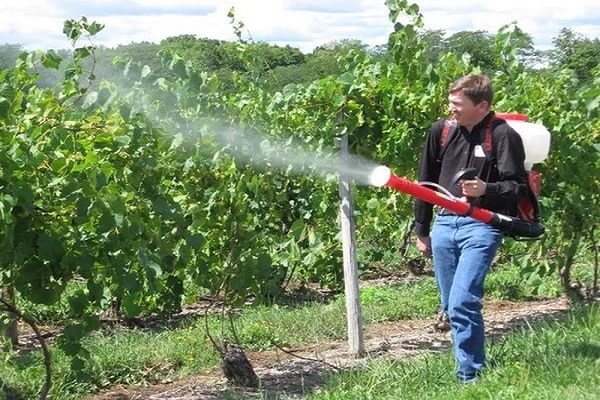
Shelter of grapes for wintering
Frost resistance is different for each grape. Pay attention to this when choosing planting material. If necessary, they begin preparations for wintering in the fall.
The harvest for the next year depends on the quality of the shelter. In case of frost, in the first place, shoots and buds, which will have to bloom, suffer.In addition to shelter, it is important not to miss the opening moment after the spring frost.
